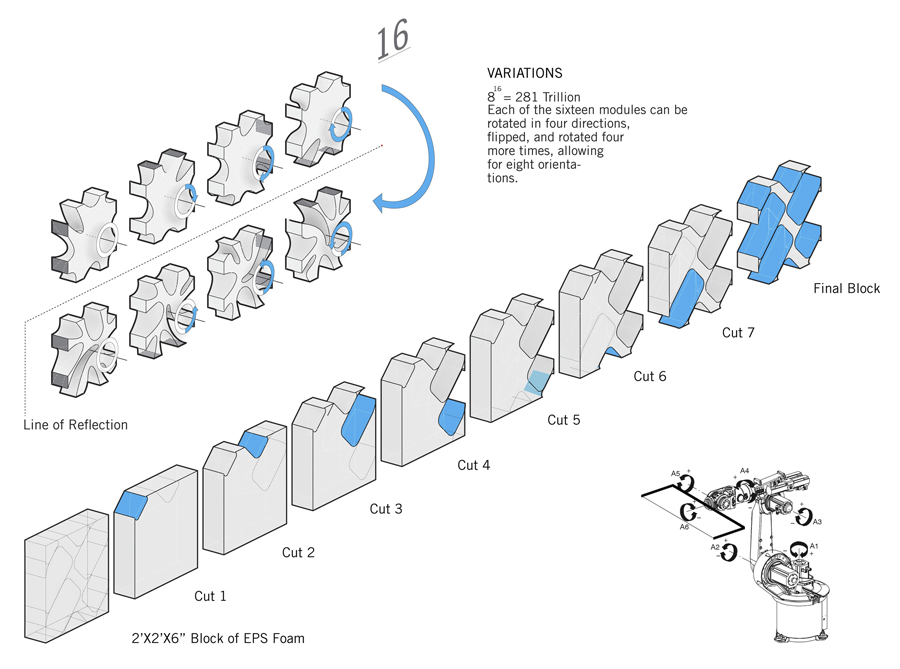
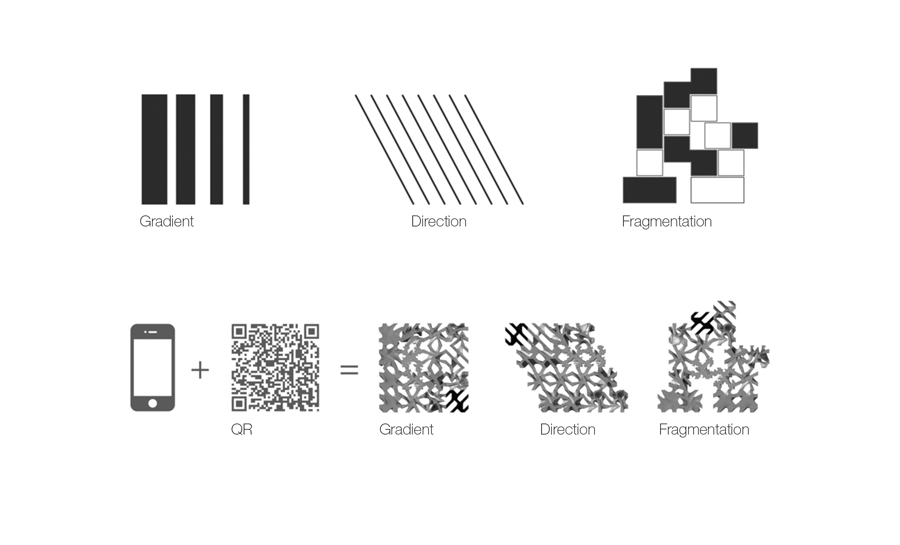
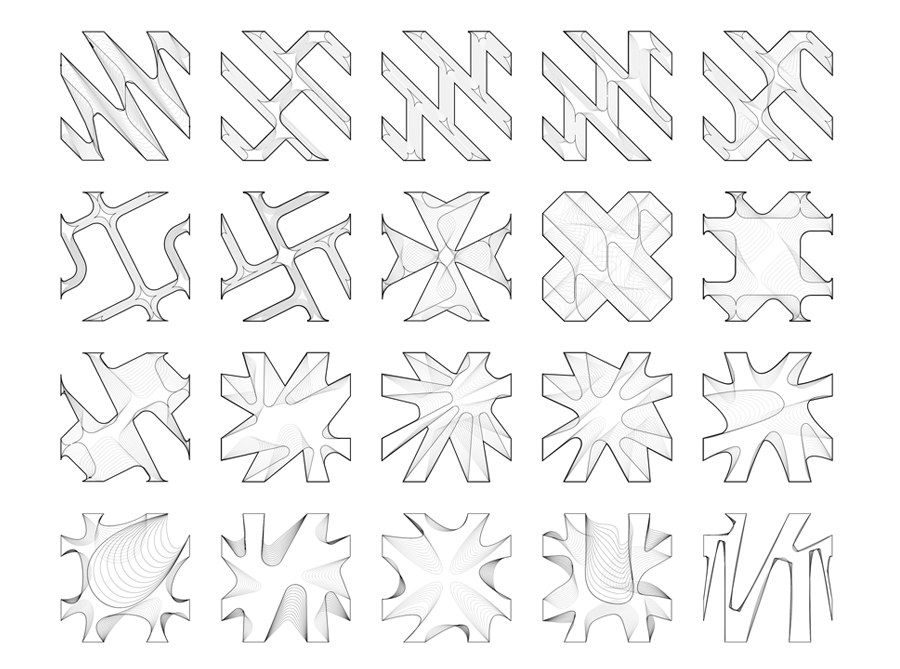
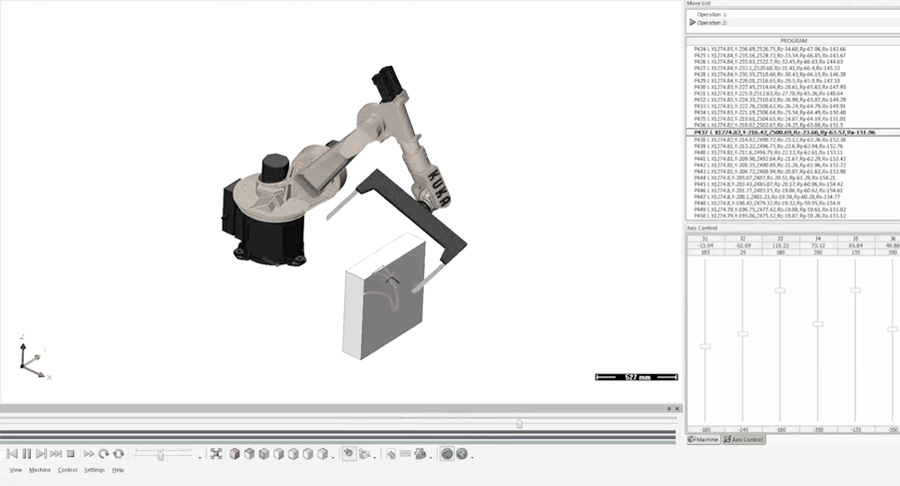

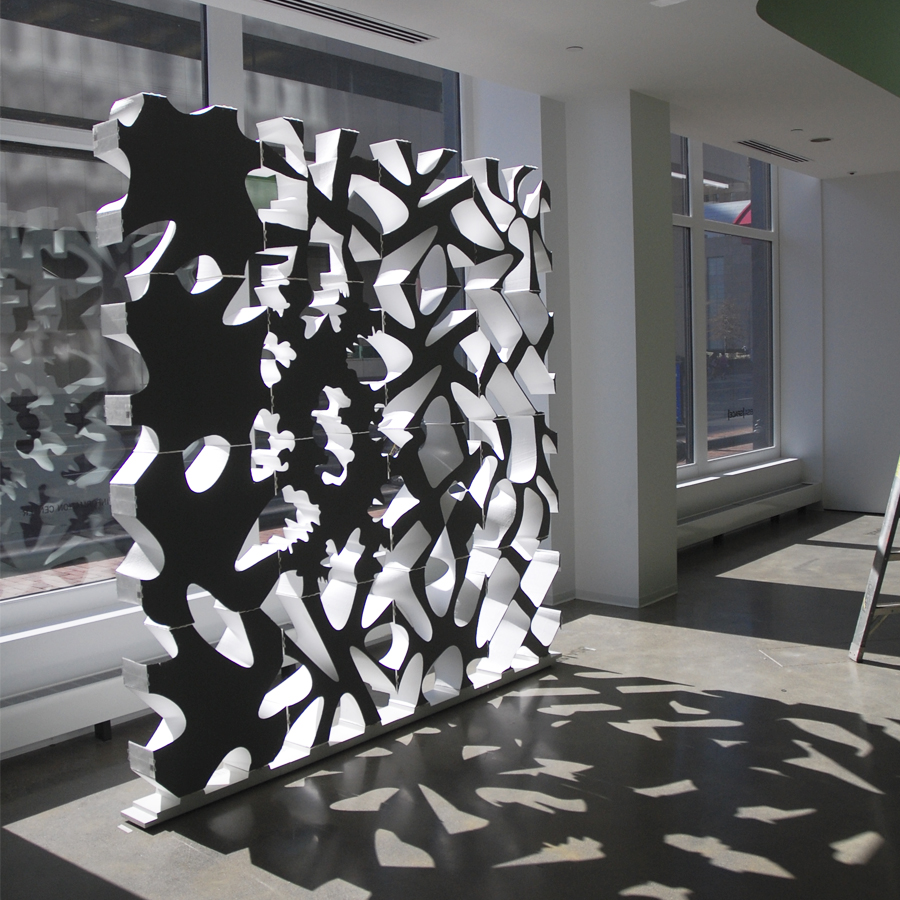
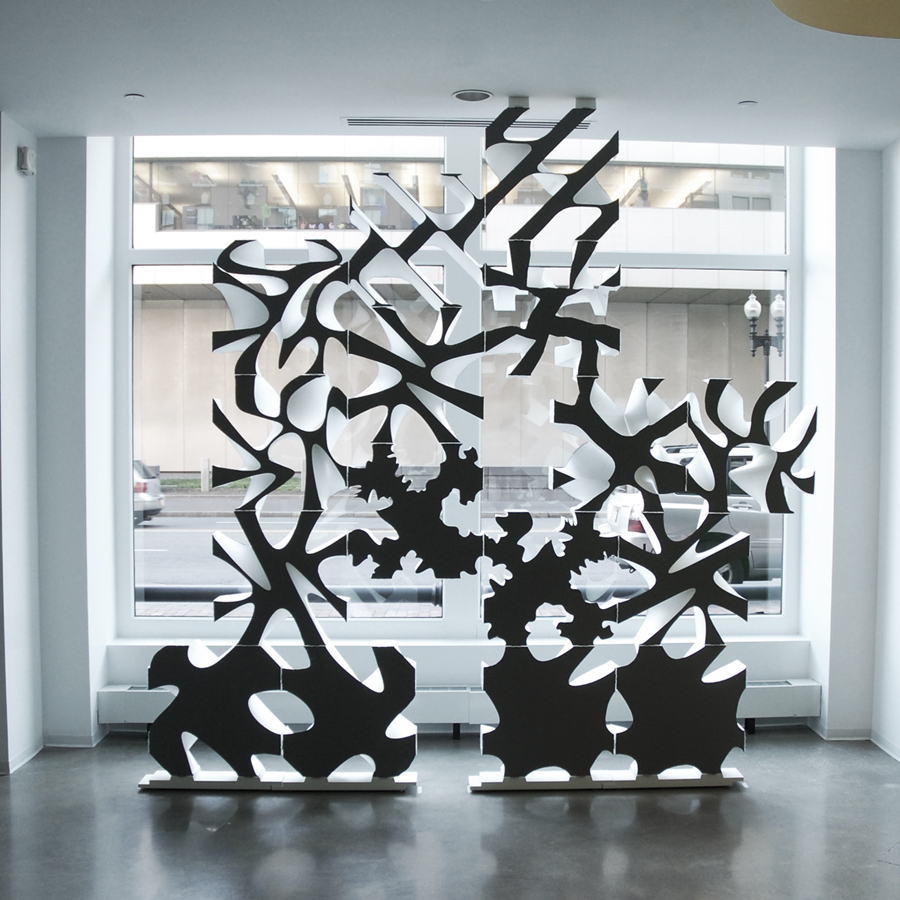

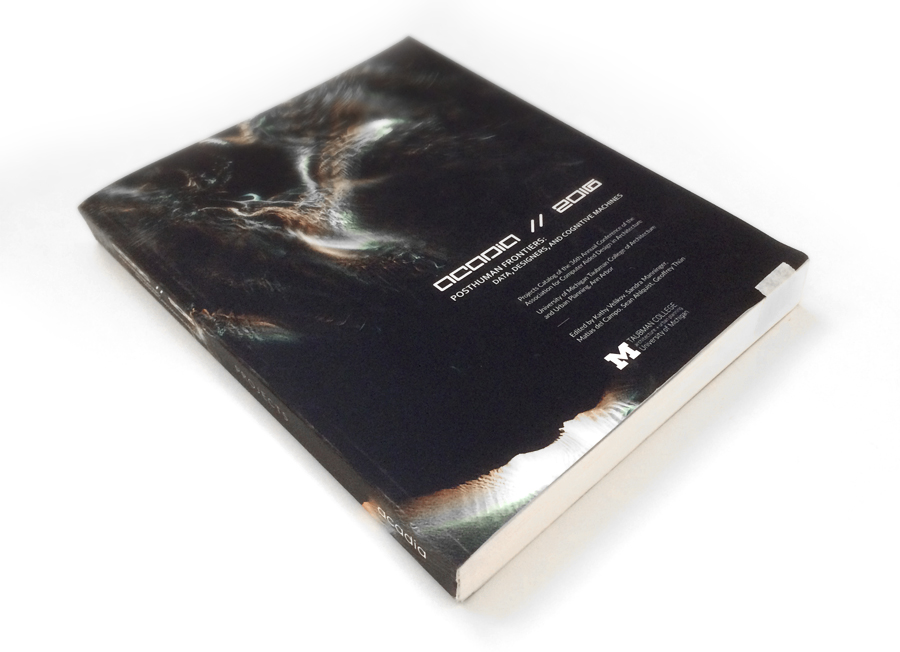
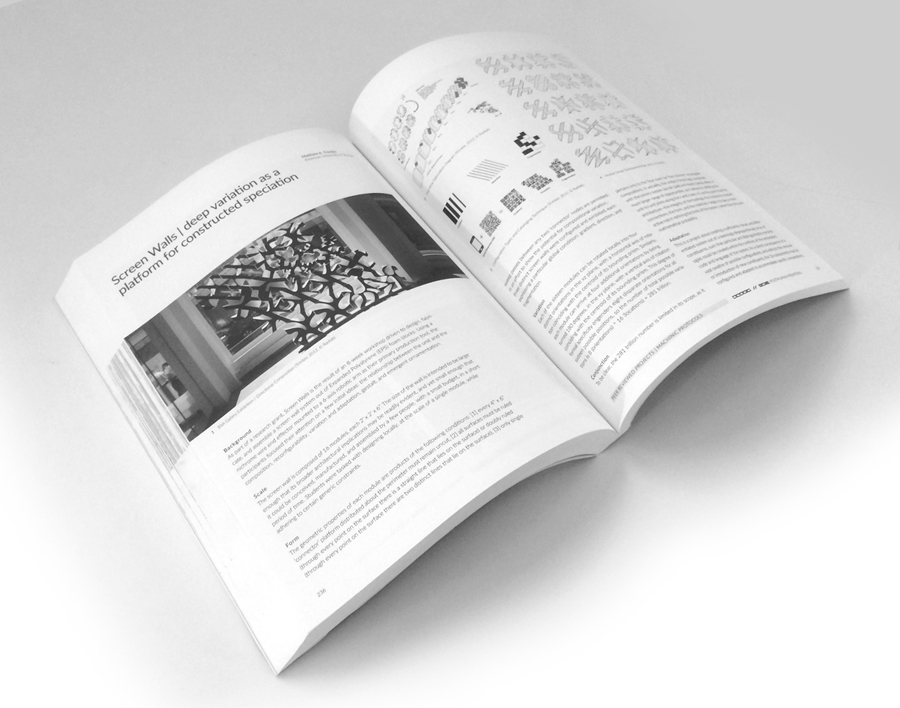
Screen Walls
Background
As part of a research grant, Screen Walls is the result of an 8-week workshop taught by Matthew Trimble through the Boston Architectural College. Our aim was to design, fabricate, and assemble a screen wall system out of Expanded Polystyrene (EPS) foam blocks. Using a nichrome wire end effector mounted to a 6-axis robotic arm as the primary production tool, participants focused their attention on a few initial ideas: the relationship between the unit and the composition, reconfigurability, variation and adaptation, gestalt, and emergent ornamentation.
Scale
The screen wall is composed of 16 modules, each 2’x2’x6”. The size of the wall is intended to be large enough that its broader architectural implications may be readily evident, and yet small enough that it could be conceived, manufactured, and assembled by a few people, with a small budget, in a short period of time. Students were tasked with designing locally, at the scale of a single module, while adhering to certain global constraints.
Form
The geometric properties of each module are products of the following conditions: [1] every 4”x6” ‘connector’ platform distributed about the perimeter must remain uncut, [2] all surfaces must be ruled (through every point on the surface there is a straight line that lies on the surface) or doubly ruled (through every point on the surface there are two distinct lines that lie on the surface), [3] only single sweep passes between any two ‘connector’ nodes are permitted.
Variation
Each of the sixteen modules can be rotated locally, in the XZ plane, with a horizontal axis of rotation coinciding with the centroid of its bounding prism, into four distinct orientations. Similarly, each module can arrive at four additional orientations by being turned 180 degrees, in the XY plane, with a vertical axis of rotation coinciding with the centroid of its bounding prism. This degree of formal specificity engenders eight disparate orientations for all sixteen possible positions, so the number of total possible variations is 8 (orientations) ^ 16 (locations) = 281 trillion.
Conjunction
To be clear, the 281 trillion number mentioned above is limited in its scope, as it pertains only to ‘four rows’ by ‘four columns’ rectangular compositions. In actuality, the unitary formal logic combined with the joinery system offers a much larger range of opportunities, as it allows for shifting the unit-to-unit joints along the x and z axes. It is at this point that the architecture – the integrity of the footings, the connections, the form, and the materials – defines the limits of the system, rather than the mathematical probability.
Adaptation
This is a project about creating a sufficiently robust and differentiated system, out of a seemingly disproportionate array of constituents, such that particular and distinguishable morphologies could be created within the confines of the embedded code and language of the system. As a direct consequence of vast swathe of possible configurations, and without the removal or introduction of new constituents, the 16 components may be configured and adapted to accommodate specific compositions.
Conclusion
While random assembly and reassembly of the 16 modules over time would undoubtedly, eventually arrive at the proposed compositions, it is the designer that must either provide the algorithm for recognizing them, or the intelligence for simply making them. In its literal form, the Screen Wall(s) serves as a space dividing filter. As the nature of its porosity changes with each new composition, so does the manner in which it filters light, views, touch, and sound. The module’s transportable and formal attributes therefore enable it to be moved, positioned and oriented according to potentially varied surrounding conditions.
Acknowledgements
Thank you to Diego Matho, Director of Design Computing at the Boston Architectural College, and the Edco Grant committee for their support. Thanks to Carl Solander from Reverse Architecture and Skylar Tibbits from SJET for serving as guest critics. Thank you to the BSA and over,under for their support, and a big thanks to Garett Hwang and Peter Schmitt for their help in laying the foundation that made this work possible. Thank you to ACADIA for exhibiting and publishing the work for Posthuman Frontiers: Data, Designers, and Cognitive Machines.
Project Team
Aaron Anderson, BAC Undergrad
Asli Baran, BAC Graduate
Bram Koss, BAC Undergrad
Pierre Lamboni, BAC Undergrad
Connie Leite, BAC Undergrad
Neil Piatt, BAC Undergrad
Esko Heilner, Radlab Designer
Jared Steinmark, Radlab Designer
Bob Williamson, Radlab Designer
Jack Smith, Radlab Intern
